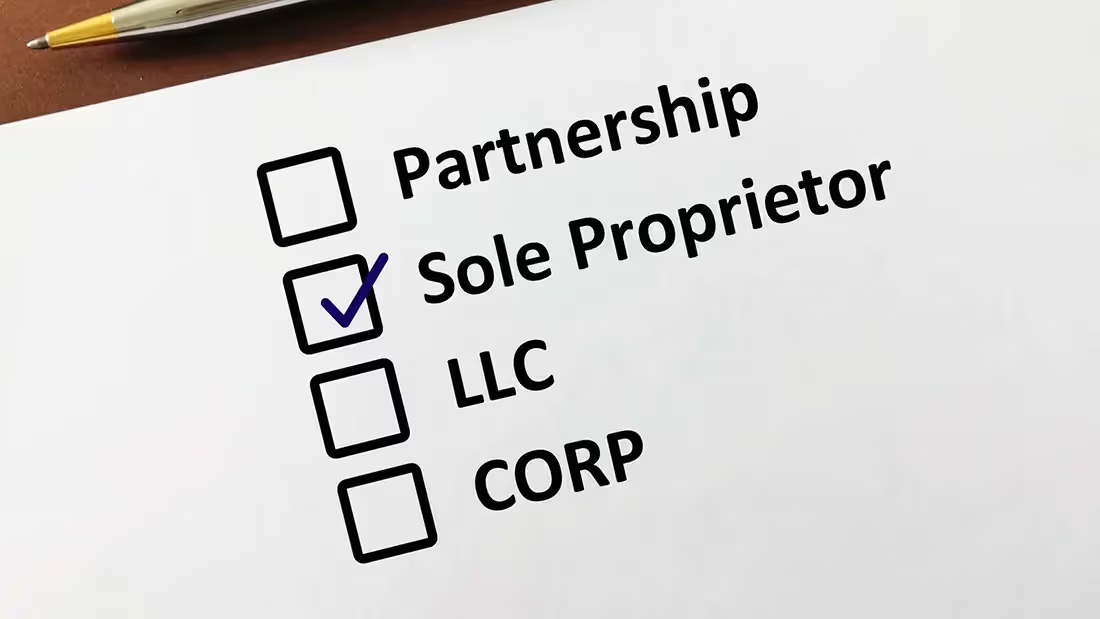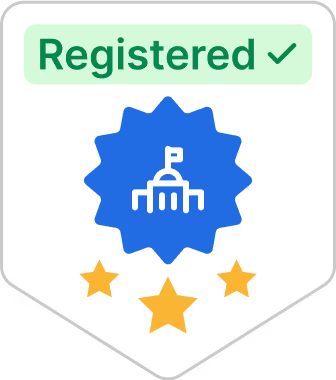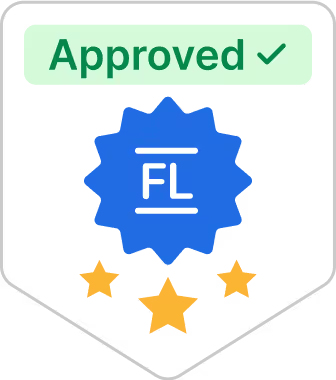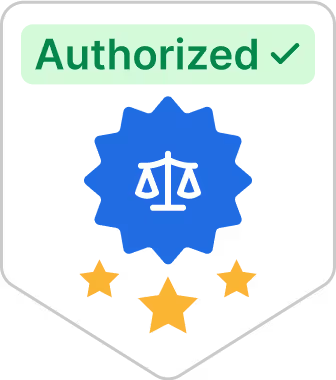How to start a sole proprietorship business

A sole proprietorship is a common business structure many individuals choose to use when establishing their own company. Sole proprietorships generally cost less to form and require less paperwork than other types of business structures (like a limited liability company, general partnership, or corporation).
There are still some basic steps you’ll need to follow when forming your sole proprietorship, though.
In this brief guide, we’ll outline everything you need to know about how to start a sole proprietorship business, from the registration process to the pros and cons of this structure.
Starting a sole proprietorship business: A quick 101
If you’re currently running a small business or intend to launch a small business under your name, you’re probably curious as to how to set up a sole proprietorship, what a sole proprietorship entails, and what the pros and cons of this business structure are.
Let’s break it down.
How to register sole proprietorship
There is no formal process for becoming a sole proprietorship—unlike other business structures, sole proprietorships do not need to register with the state in which they’re operating.
That being said, while a sole proprietorship is the simplest business structure, you’ll still need to procure the appropriate licenses and permits.
To make your new business official, you’ll want to take the following steps:
- Create a business name – Unless you want your company’s name to be your own name (i.e., John Smith), you’ll want to file a doing-business-as (DBA) application. DBAs are filed through the state and will cost anywhere from $5-$100, depending on where you live. Be sure to choose a name that isn’t already taken or one that is similar to another existing business. You can search which names are already spoken for within your state’s DBA registry or through the U.S. Patent and Trademark Office.
- Obtain an EIN – The federal government requires that all sole proprietors register for a federal employer identification number (EIN). You can easily apply for EIN through the Gov+ or IRS website.
- File for the appropriate permits and licenses – Depending on the state you live in, you may need to file for a business license with your city or county or get permission from your locality to work from your home.
- Create a business checking account – Under the sole proprietorship structure, legally, you and your business are one and the same. That means if your business loses money, you, personally, also lose money. It’s in your best interest to create a separate business checking account to keep your company’s finances organized. This will also give you a better sense of how your business is profiting.
What is a sole proprietorship?
So, what is a sole proprietorship business? A sole proprietorship is an unincorporated business owned and run by one person — there is no distinction between the business and the owner. Examples of sole proprietorships include everything from freelance designers to accountants, chefs, and personal trainers.
Having a sole proprietorship means you’re able to reap the benefits of your hard work, but you’re also responsible for your businesses’ debts and losses. Let’s explore the pros and cons.
Pros and cons of a sole proprietorship
So, why would someone form a sole proprietorship vs. an LLC? The IRS reported in 2016 (the last year calculated) that over 25.5 million businesses paid taxes as sole proprietors. This business structure is popular for a reason.
There are many benefits of a sole proprietorship, including:
- Easy to form – As we detailed above, creating a sole proprietorship is fairly simple and low-cost. Except for any fees you need to pay for your county or state business license plus the DBA application fee, creating a sole proprietorship is practically free. And, even more importantly, the paperwork is minimal.
- Complete control – As a sole proprietor, you are the boss in every regard. You are the sole owner, so you can make the rules, collect the paycheck, and decide what direction you want your small business to go.
- Simple tax process – Because you and your business are one and the same under a sole proprietorship, you’ll only need to file two forms: your individual tax return and a Schedule C form. Since your business income is included in your personal income on your tax return, your tax rate may be lower than the standard corporate tax rate of 21%. However, there is a self employment tax that sole proprietors must pay.
A sole proprietorship is a popular and widely used business structure, but that doesn’t mean it’s perfect. Drawbacks to forming a sole proprietorship include:
- Unlimited personal liability – Unlike other business structures that involve multiple business partners, sole proprietorships must face all personal liability. Your business is not a separate legal entity or business entity, so you face unlimited liability. This means that personal assets or a bank account are not protected if your company gets sued. If your business suffers and you have to file for bankruptcy, for instance, you’ll also have to file for personal bankruptcy.
- Difficult to raise capital– If you plan to grow your small business, you may not be able to get to the state of development you’d like while operating as a sole proprietor. This is because investors cannot buy stock in your company. Also, banks are often hesitant to give loans to sole proprietors, especially when they’re just starting out, as they may perceive your one-person operation as too small and unreliable when it comes to repayment.
- Burden of complete control – The boon of having total control of your business can also be a burden. As the sole operator of your company, you’re always on the clock. This may be appealing to folks who like to set their schedule, though.
Get your business off the ground – Apply online now
A sole proprietorship is a great model for a small business owner who wants to be in total control of their company.
While this structure is relatively easy and low-cost to form, there is a lot of responsibility placed on the shoulders of one person as the sole owner. Sole proprietors reap all of their company’s benefits, but they also suffer any losses.
We offer a simple solution to the often frustrating task of filling out government forms and ticking off ‘to-do’ lists when finalizing small business requirements. You can fill out this EIN number application from the comfort of your home—no long government lines or waiting on the phone.
Sources:
- Business News Daily. How to Start a Sole Proprietorship. https://www.businessnewsdaily.com/15802-start-a-sole-proprietorship.html
- IRS. SOI Tax Stats. https://www.irs.gov/statistics/soi-tax-stats-nonfarm-sole-proprietorship-statistics
- IRS. Apply for an Employer Identification Number. https://www.irs.gov/businesses/small-businesses-self-employed/apply-for-an-employer-identification-number-ein-online
- Small Business Administration. Sole Proprietorship. https://www.sba.gov/business-guide/launch-your-business/choose-business-structure
- The Balance Small Business. Starting a Sole Proprietor Business. https://www.thebalancemoney.com/starting-a-sole-proprietor-business-pros-and-cons-398889







.avif)















